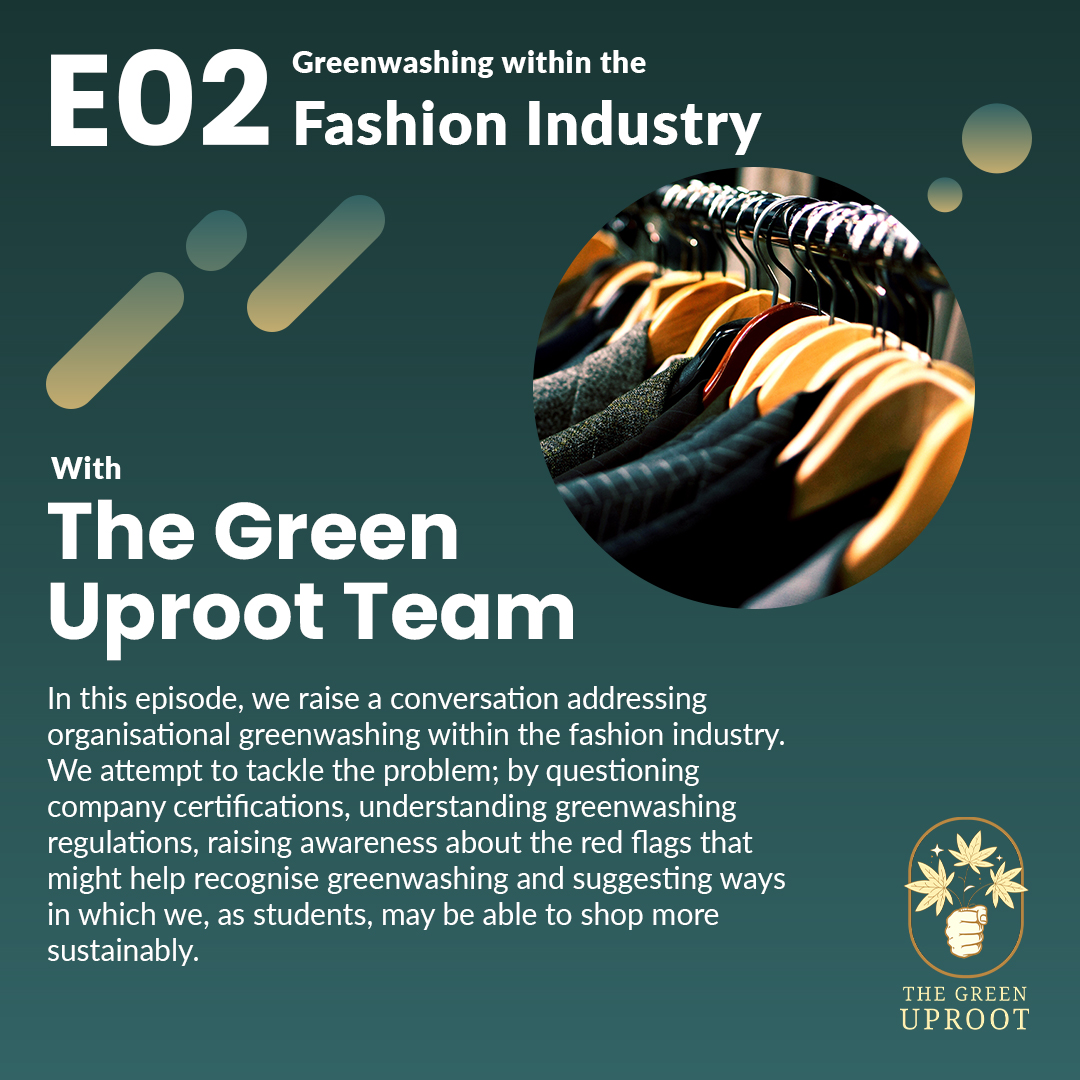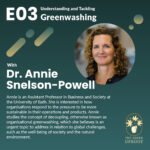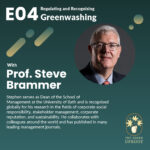Statistics on the environmental impact of the fashion industry:
- The fashion industry is responsible for 10% of human carbon emissions, which is more than all international flights and maritime shipping combined (1).
- The fashion industry is the second largest consumer of water, with an estimated 700 gallons used to produce one cotton shirt and 2000 gallons used to produce one pair of jeans (2).
- We are consuming more clothes every year, with people on average buying 60% more clothing items in 2014 than in 2000 but keeping these clothes for half as long (2).
- Both synthetic and natural fibres have their problems. Synthetic materials release large volumes of carbon into the atmosphere during their production and microplastics into the ocean during their production and when washed (3, 4). Cotton, the most widely used natural fibre, is a very water-intensive plant, with some experts estimating the growth of cotton crops uses the most water of all agricultural commodities (5).
- Use of fibres made from recycled single-use plastic is not a long-term solution to the problem of emissions and waste generated by the fashion industry (6).
Greenwashing in the fashion industry:
The not-for-profit organisation, Changing Markets Foundation, found up to 59% of green claims by European and UK fashion brands were greenwashing (when analysing 49 major fashion brands using the UK Competition and Markets Authority’s Green Claim Code) (6).
Certification schemes:
There are more than 100 sustainability certification schemes in use within the textile industry. Changing Market Foundation analysed 10 of the best-known certification initiatives and found none to be fit for purpose. Some of the problems they found included failure to uphold high levels of ambition; not covering the full life cycle of a product, focusing solely on one product/material, lack of accountability or consequence for failing to meet targets and a lack of transparency. They concluded that at best schemes provide a ‘patchy promise of sustainability’ but at worst enable widespread greenwashing (7).
Fast-fashion:
Fast-fashion companies have recently emerged in response to consumer demands for cheap and easily obtainable clothing. Some fast-fashion companies are now attempting to address the increasing consumer demand for sustainability by greenwashing with false or misleading claims. This allows them to give the illusion of keeping up with changing consumer expectations when the fast-fashion business model is entirely unsustainable (6).
The problem with greenwashing:
- It encourages people to buy products under false sustainability claims.
- People may lose trust in all claims and so give up making any effort to shop sustainably.
- Companies that are making sustainable efforts may not be rewarded with increased sales.
- It means the hugely negative environmental impacts of the fashion industry are not being properly addressed (8, 9).
Tackling greenwashing in the fashion industry:
Current organisations within the UK that can regulate advertisements include The Advertising Standards Agency; Trading Standards; Ofcom and The Competition and Markets Authority (CMA) (10). The CMA has recently created the Greens Claims Code, which consists of six principles for companies to follow when making environmental claims, designed to specifically tackle the problem of greenwashing (8).
In the UK, ASOS, boohoo and Asda are all currently under investigation by the CMA for greenwashing claims (11). Whilst in the US, H&M is being sued for its misleading ‘Conscious Collection’ (12). There is currently no legal definition for greenwashing in England or Wales, making it difficult for legal action to be taken against companies (13).
Greenwashing red flags:
- Broad, vague, or sweeping claims. For example, ‘made with recycled fibres’ often means that only a small percentage is made with recycled fibres.
- No justification of sustainability claims.
- Entire ranges of clothes being branded as sustainable (8, 9).
Sustainable suggestions to avoid any greenwashing:
- Not buying in the first place.
- Buying second-hand.
- Buying from local brands to avoid overseas labour, shipping footprint, and plastic packaging when shipped.
References:
- United Nations Framework Convention on Climate Change, 2018. UN Helps Fashion Industry Shift to Low Carbon [Online]. Available from: https://unfccc.int/news/un-helps-fashion-industry-shift-to-low-carbon [Accessed 23 December 2022].
- McFall-Johnsen, M., 2020. These facts show how unsustainable the fashion industry is [Online]. World Economic Forum. Available from: https://www.weforum.org/agenda/2020/01/fashion-industry-carbon-unsustainable-environment-pollution/#:~:text=The%20fashion%20industry%20is%20also,largest%20consumer%20of%20water%20worldwide.&text=It%20takes%20about%20700%20gallons,produce%20a%20pair%20of%20jeans [Accessed 23 December 2022].
- Kirchain,R., Olivetti, E., Reed Miller, T. and Greene, S., 2015. Sustainable Apparel Materials, Cambridge, MA: Materials Systems Laboratory, Massachusetts Institute of Technology.
- Peng, J., Wang, J. and Cai, L., 2017. Current Understanding of Microplastics in the Environment: Occurrence, Fate, Risks and What We should Do. Integrated Environmental Assessment and Management, 13(3), pp.476-482.
- World Wildlife Fund, n.d. Sustainable Agriculture – Cotton [Online]. Available from: https://www.worldwildlife.org/industries/cotton [Accessed 23 December 2022].
- Changing Markets Foundation, 2021. Synthetics Anonymous: Fashion brands’ addition to fossil fuels. s.l.: Changing Markets Foundation.
- Changing Markets Foundation, 2022. Licence To Greenwash: How certification schemes and voluntary initiatives are fuelling fossil fashion. s.l.: Changing Markets Foundation.
- Competition and Markets Authority, 2021. CMA guidance on environmental claims on goods and services.(CMA146). London: Competition and Markets Authority.
- Horton, H., 2022. Greenwashing UK fashion firms to be named and shamed by watchdog. The guardian [Online], 11 March. Available from https://www.theguardian.com/fashion/2022/mar/11/greenwashing-uk-fashion-firms-to-be-named-and-shamed-by-watchdog [Accessed 23 December 2022].
- The Advertising Standards Authority and The Committee of Advertising Practice, n.d. Coding and rulings: Sanctions [Online]. Available from: https://www.asa.org.uk/codes-and-rulings/sanctions.html [Accessed 23 December 2022].
- Competition and Markets Authority, 2022. London: Gov.uk. Available from: https://www.gov.uk/government/news/asos-boohoo-and-asda-investigated-over-fashion-green-claims?utm_medium=email&utm_campaign=govuk-notifications-topic&utm_source=e71a4d04-fa92-449b-8dfc-7921933197f9&utm_content=immediately [Accessed 23 December 2022].
- Commodore v. H&M Hennes and Mauritz LP. [2022]. 7:22-CV-06247.
- Stewarts, 2022. Greenwashing and the law in the UK [Online]. Available from: https://www.stewartslaw.com/news/greenwashing-and-the-law-in-the-uk/ [Accessed 24 December 2022].



